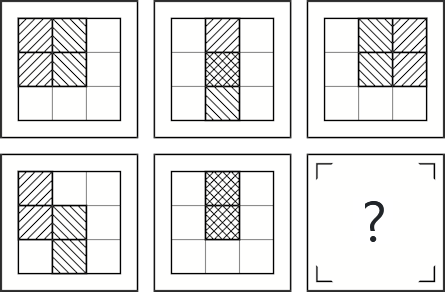You may or may not be familiar with the concept of a SAT curve depending on the educational system your country. If you schooled in any of most countries in Africa, then this might be a foreign concept to you. So, you must be wondering, “What is a SAT curve and how does it work?”
However, for those who had their primary and secondary education in the United States, you should be quite familiar with the concept of a grading curve. At least in some basic form.
Before you continue, you may want to read our article on the basics of SAT, written for newbies in the world of the SAT.
All About the SAT Curve
If you’re planning to take the SAT, then you probably already heard about the SAT curve. So, is it real?
Reports show that about 1.7 million high school seniors from all around the world sit for SAT every single year. And this number is just for high school seniors alone. It doesn’t even take into account the thousands of others who take the SAT a bit earlier in their high school careers.
Now with this extremely large number of people coming from backgrounds of diverse origins, people of different ages, and with different experiences. How exactly can SAT scores be fairly and accurately curved?
Well, that’s where equating comes in. College Board converts your test score from its raw form into a scaled score. However, this scoring is not by comparing with the performance of other test takers on the same test. There a number of other precise factors that come to play when converting SAT scores.
READ: All You Need to Know About SAT – SAT FAQs
How the SAT is Scored
Now, lets get into the nitty gritty of how the SAT curve works.
As you know, the SAT comprises sections which are subject-specific. These sections add up to form the main test we know as the SAT.
The sections include the math section, and the evidence-based reading and writing test. The evidence-based reading and writing section contains separate reading and writing sections under it.
Normally, on each section, you will receive a raw score. Simple English, your raw score in each section represents the total number of questions you got right.
This raw score, however, does not appear on your score report. The examiners use this score to calculate your scaled score, and that’s all. They call this process of converting your raw score into a scaled score, “equating”.
For each section, they equate the raw score per section into a scaled score, ranging from 200-800. When equating the scores, the examiners consider certain things. But chiefly, it’s the specific difficulty of that version of the test you are taking.
In one administration, there are several versions of the test. This means that it is highly unlikely that you and your next-door neighbor would take the same version of the test. Hence, the conversion of your score will depend on the version of the particular test you took.
And because your test will differ from the person sitting next to you, the process of equating your score will also differ from that of your neighbour.
The basic reason CollegeBoard uses the equating process to produce scaled scores is to make it possible and easier to compare scores across different versions of the SAT.
Because the scale is even, any scaled score obtained gives the exact same level of mastery. And that is regardless of the difficulty level of the test.
Equating Scores on the SAT Curve
Like we earlier explained, the process of equating on the SAT is quite different from the traditional scoring curve. The SAT curve doesn’t work like the traditional scoring curve. Rather than comparing all test takers’ scores, the SAT curves your score based on the difficulty of the version of test that you took.
By doing things this way, no one set of people gets the advantage over the others. No one will get the upper hand due to an easier test to the disadvantage of others who got a relatively tougher test.
Therefore, if you get an easier version of the SAT, don’t get too excited. In the process of conversion, they will consider this factor.
Also, if you get the other extreme, i.e. a more difficult version. Don’t worry, just relax. This factor will also play a role in the process of equating. This means that mistakes made on an easier version of the SAT will be less forgiven than mistakes made on a tougher version of the SAT. You get it now, right?
How is the Difficulty of My SAT Test Decided?
When new SAT questions are being prepared, the writers make it a point to prepare questions that aren’t far from already existing questions in difficulty.
Using detailed content, statistical specifications, and trial questions, the test creators determine the difficulty of each question and consequently inform the test writers.
Generally, different SAT tests vary in difficulty but the variation is always quite small. Consequently, the equating process only varies by a small margin across different versions of the test.
When Can I Expect to Take the Easiest SAT Test?
The misconceptions about the scoring curve process on the SAT has led many to think that there are certain dates when SAT tests are generally easier than others. F
or instance, some people might be of the impression that the final time students have to take the SAT before college admissions, October, is when the SAT tests are hardest. This is a myth and is not necessarily true.
Remember, you are scored on your own merit. Your score isn’t in relation to another person’s. So, even if you happen to take the test with the brightest minds, it doesn’t, in any way, tamper with your chances. Conversely, taking the test with weaker students will not help your chances either.
Again, about finding the SAT date with the easiest test. You should know that on every SAT date, there are multiple versions of the test administered per time. There is no way on earth to know which version would land on your table. By no way, we mean legally, of course. Lol. That was on a lighter note though.
But anyway, even if there was a way to know, it still doesn’t count much. That’s because while equating your score, the difficulty (or simplicity) of the version of the test you took will definitely be accounted for. Hope you understand?
READ: What Are the SAT Scores That Guarantee Admission to Ivy League
How to Calculate your Scaled Score from your Raw Score
In simple English, you can’t. But, if you have a copy of the score conversion chart for the particular test you took, then you might be able to.
But since there’s no way for you to get the score conversion chart, then you’d have to put in all the effort you possibly can in your practice tests.
When practicing, ensure that you don’t just work blindly and mismatch scoring instructions on different tests. Follow the scoring instructions on each particular test to the latter.
How to Ensure that your Scaled Score is the Highest in the SAT Curve
We know that there’s a universal desire among students everywhere to find ways to maximize their potentials and get their highest scaled score possible.
If there were ways to ensure that you get your highest scaled score possible, we would be the first to tell you, but there isn’t.
There is no date on which easier versions of the test are administered. There’s no centre that administers easier tests. And peer influence will not affect the equating of your raw score to your scaled score.
If you’re wondering what date would be best to take your SAT test, take the test on the date you’re best prepared for. If you want to get your highest possible scaled score, then study hard. Prepare well, and don’t shunt the process.
If you have to, join a study group and get a tutor. Attend tutorial centres and study with the best study materials possible. T
o help you, we have vowed to keep supplying you with all the information you’d possibly need to make the best scores.
Plus, we also have a review of an assortment of the best SAT prep books currently available in the market. Ensure that you take advantage of these and do best you can with them.
So with this we come to the end of our post today on the SAT scoring curve. Now, you know how the SAT curve works. It should make better sense to you how your SAT score comes about now, isn’t it?
We hope you use this information to your advantage and go ahead to get your highest possible scaled score.
As always, we wish you unlimited success. And, of course, please do not forget to share.


